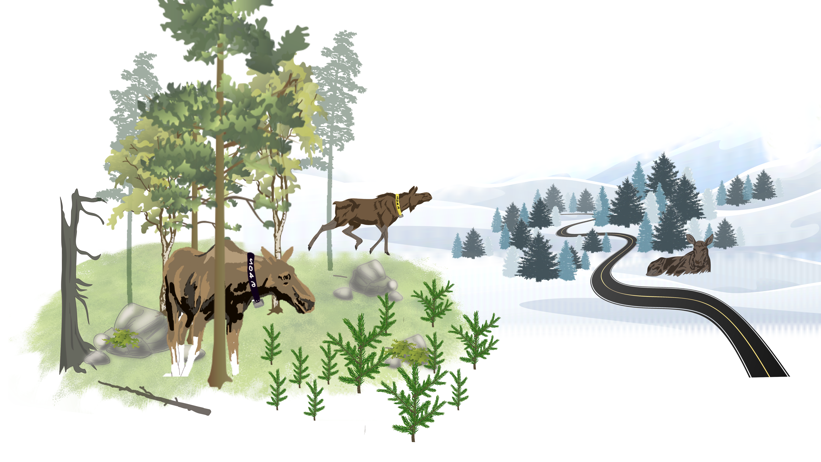
How moose choose to move in forest landscapes: ”Avoiding areas close to roads”
Most moose prefer to stay in young forests and mixed forests with a high proportion of deciduous trees. But they want to be far away from the nearest road. This is shown by a study from the Swedish University of Agricultural Sciences (SLU), which has mapped moose movements for over 20 years.
What influences the moose's choice of habitat? The researchers have investigated this using data from almost 400 GPS-tagged moose collected since 2004. The study followed the movements and behaviour of the tagged moose across 21 locations from Växjö in the south to Gällivare in the north.
The results reveal a clear pattern in where moose thrive best.
-We saw that larger, contiguous areas of mixed forest with abundant deciduous trees and patches of young forest were important to moose. This was true pretty much year-round and across all parts of Sweden, says Desirée Guidobaldi Stenbacka, a PhD student at the Department of Wildlife, Fish and Environmental Studies at SLU.
The study also shows that moose behaviour is influenced by the broader landscape.
-It is clear that moose avoid areas close to roads. Roads, other infrastructure and forestryactivities all affect moose habitat and behaviour. It is important to consider the large context in which moose move in the forest landscape, says Desirée Guidobaldi Stenbacka.
Knowledge for forest management
She describes the cultivated forest landscape as a jigsaw puzzle, where the pieces represent different forest areas, such as clear-cuts, young plantations or older forest. Moose prefer to move within the connected pieces that form larger areas, where they can find both food and safe places to rest.

Knowledge about moose habitat selection can be used in wildlife and forest management.
-The results of the study indicate that if we preserve and prioritise the habitats that moose prefer, this may increase the possibility of moose spreading out over larger areas. This could potentially reduce grazing pressure in individual populations, but more research is needed on this aspect as it is not something we have looked at in detail in this study, says Wiebke Neumann Sivertsson, Associate Professor of Wildlife Biology.
Scientific article
Desirée Guidobaldi Stenbacka, Matteo L. Bastianelli, Navinder J. Singh, Marco Heurich, Göran Ericsson, Wiebke Neumann Sivertsson.doi.org/10.1016/j.foreco.2025.123167

Contact
-
PersonDesirée Guidobaldi Stenbacka, PhD StudentDepartment of Wildlife, Fish and Environmental Studies
-
PersonWiebke Neumann Sivertsson, researcherDepartment of Wildlife, Fish and Environmental Studies
-
PersonFrida Wengberg, Communications OfficerDepartment of Wildlife, Fish and Environmental Studies